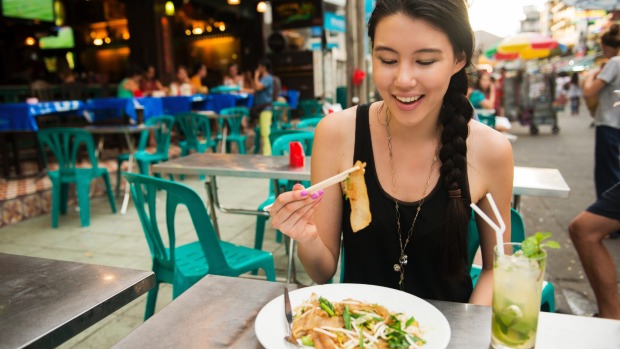
On your home turf, you're quite the foodie. You know where to find the finest wagyu steak, the best cold-drip coffee and the smoothest single malt bar. More than that, you know when to go, where to sit and what to tip.
But none of that hard-earned local knowledge is any good to you when you land in a new place for the first time. And let's face it, the quality of your eating and drinking can make or break your trip. So how do you avoid the tourist traps, sniff out a truly memorable meal, not angst out over paying the bill and at the same time, get a real taste of the city you're in?
Glad you asked.
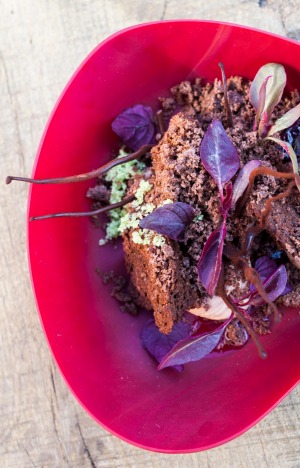
I once asked the same concierge in Rome where to eat, 10 years apart. His answers were exactly the same – the restaurants were not. Some concierges are brilliant (Mandarin Oriental in Paris, Upper House in Hong Kong, Four Seasons in Milan, I'm thinking of you) but most tend to give you their same top five recommendations regardless of what you are really asking for. If you do engage, then ask for something truly local, off-the-radar, and where the chefs eat. See mandarinoriental.com/paris/; upperhouse.com; fourseasons.com/milan/
You see them in all the main tourist drags – charming young people holding giant menus and promising that the best Peking duck, paella or pasta in the world is right inside the door. Really? If that dive genuinely did the world's best, they wouldn't need a spruiker. Ditto, avoid any place with a painted cut-out of a happy chef outside the door.
There's a fine line, so to speak, between wanting to eat in a joint good enough to have people lining up to get in, and having to queue up yourself.
Terry Durack
One good restaurant leads to another, with just one question to a smart manager or chef. Ask them for a place that does good coffee (all restaurant industry pros know where the good coffee is); a good bar and a good local place to eat; and you're on your way.
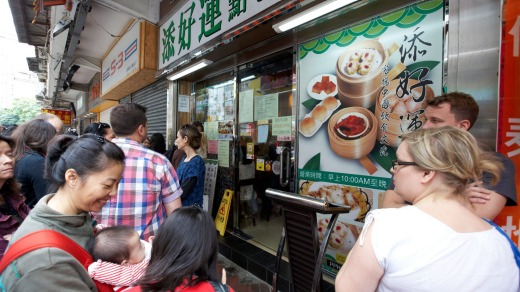
Having your heart set on eating a particular restaurant, only to find it closed when you get there, is one of the pitfalls of modern travel. I've been known to book the restaurants first and the flights second. Avoid France, Italy and Spain in August, when everyone – including chefs, restaurateurs and key suppliers – goes on holidays.
Keep an eye on key dates for religious festivals, public holidays and even sporting events. All set to review a hot new restaurant in Rome I turned up to find to find the entire place turned into a World Cup screening room for Italy versus France, with tables of cheeses and buckets of beer. At least Italy won.
Keep an eye on weather patterns too. The heavy rains of the monsoon season can dampen the charms of outdoor noodle markets and dining terraces across south-east Asia from July to October.
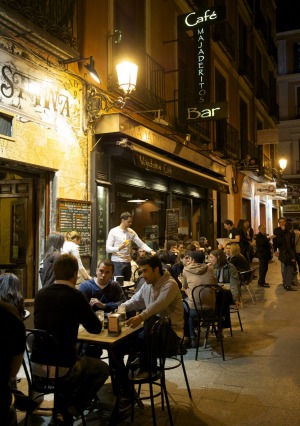
How much nicer it is to ask for the bill in the local language rather than making those impatient scribbling motions in the air with your hands.
In France, it's "L'addition, s'il vous plait". In Italy, "Il conto, per favore". In Spain, "La cuenta, por favor". In Portugal, "A conta, por favor". In Germany, "Die rechnung, bitte". In Greece, "To logariasmo, parakalo". In Japan, "Okanjou o onegaishimasu".
In Thailand, it's "Check bin kap" if you are male, and "Check bin ka" if you are female. In Korea, it's "Gesano juseyo". In China, use the Mandarin "Qing jiezhang", although the Cantonese "Ng goi, mai dan" is more common in Guangdong or Hong Kong. In Russia, "Rasschitajtye, nas pozhalujsta".
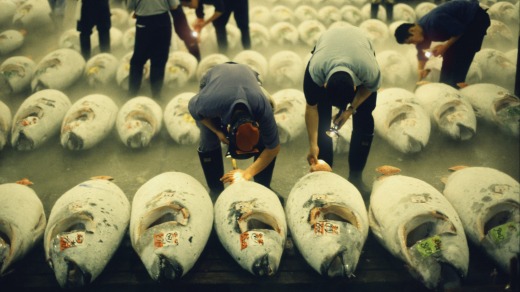
Good luck with that last one.
Don't tip in Japan and China. Do tip in America. Think about it in Switzerland and Sweden. The thinking is done for you in France, Italy, Germany, Austria, Hong Kong, and Singapore, where a service charge is automatically included, but you can round the bill up if you want to leave extra for your waiter.
In the US, waitstaff generally expect 15 to 25 percent of the total bill to help "top up" their low wages. In London, a discretionary 12½ per cent tip is often added to your bill. It's probably just as well – you try working out 12 ½ per cent of 150 quid after three glasses of red – but some staff will also leave the tip column open on your credit card receipt, hoping you will tip twice. If in doubt, there's nothing wrong with politely asking if service has been included. And yes, there's an app for that. GlobeTipping, 99c.
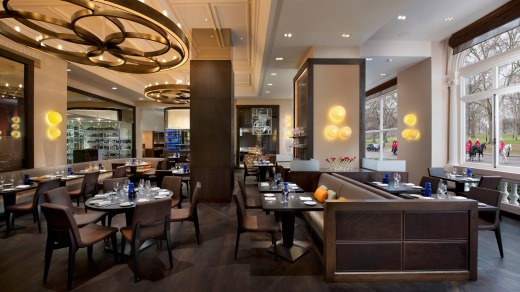
The further upmarket you plan to dine, the further ahead you'll need to book. If you're planning to eat your way through the World's 50 Best Restaurants, then think ahead. Several open bookings two to three months in advance, and sell out almost immediately.
Restaurants such as El Celler de Can Roca in Girona, Spain and Osteria Francescana, Modena, Italy, only take bookings online via their websites. No luck? Try again once you are there – especially in person - as there may have been a cancellation. And always, have a Plan B. See cellercanroca.com; osteriafrancescana.it
It used to be that dining in your hotel was a guarantee of bland international cuisine, but no longer. Check out Heston Blumenthal's Dinner by Heston at London's Mandarin Oriental Hyde Park; extraordinarily good yum cha at Above & Beyond at the Hotels Icon and Intercontinental in Hong Kong, Daniel Humm's fun fine dining at The NoMad Hotel in New York, and Pei Modern at the Hotel Sofitel Melbourne. See dinnerbyheston.com; hotel-icon.com; nomadhotel.com hongkong-ic.intercontinental.com; peimodern.com.au
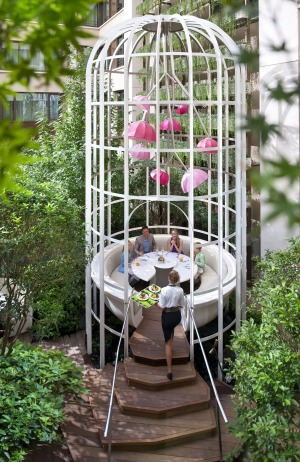
Tourist guides in hotel rooms are full of tourist restaurants.
The sartorially splendid Grant Thatcher launched the first LUXE travel guide to Bangkok back in 2002, and remains as style counsel after selling to Melbourne-based travel guides entrepreneur Simon Westcott. There are now 36 pocket-sized guides from Beijing to Barcelona; Miami to Milan; and Sri Lanka to Stockholm. They're sharp, savvy, dead-set funny, and on the money. See luxecityguides.com
It's not what you eat, it's how you eat it. When eating with your hands in Morocco the Middle East or India, it's polite to use only your right hand. Similarly, in China use the colour-coded serving chopsticks to serve your food, rather than your own. In Naples, a pizza never sees a knife and fork. It's best eaten in the hands - a libretto, or folded like a book - while in America, double dipping (dipping your chip into the bowl after you've already taken a bite) is a crime punishable by death.
Not everybody sits down to dinner at 8pm. In Spain and South America, it's more like 10 or 11pm. You can wander around the streets of Madrid at 1am watching families with young children taking a leisurely after-dinner stroll. In most Arab countries, dinner is also generally taken after 10pm, while Parisians and Romans tend to eat around 9pm. In Sweden, 6pm is considered perfectly acceptable, while New York restaurants tend to have two sittings, the first as early as 5.30pm.
Where there is a fresh food market, there is not only prime picnic fare, but strong coffee, freshly baked bread, wonderful butchers and cheap and cheerful no-nonsense eateries. Eat anywhere in and around Athens' Central Market, Tokyo's Tsukiji fish market (before it moves out of Tokyo in 2016), Pike Place Market in Seattle, Tekka Indian wet-market in Singapore, Cho Lon market in Ho Chi Minh City, and Mercado de la Merced in Mexico City.
Tourist attractions attract tourist restaurants. So to get a more authentic experience, get off the beaten track, if only by a block. That means heading down Via del Governo Vecchio in Rome to the little Trattoria Antonio Bassetti instead of having a burger in the Piazza Navona.
There's a fine line, so to speak, between wanting to eat in a joint good enough to have people lining up to get in, and having to queue up yourself. Here's when it's worth the wait: for a bloody mary Sunday brunch at Prune in New York's East Village, for lunch at Joel Robuchon's L'Atelier in Paris, for dim sum at Hong Kong's Michelin-starred Tim Ho Wan, and for dumplings at Beijing's Shandong QiangMian Mantou Dian.
For the brilliant felafel at L'As Du Falafel in the Marais in Paris, for the burger at MEATliquor in Hoxton, London, for the crab with sauce Louis at Swan Oyster Depot in San Francisco, for the poutine at Au Pied de Cochon in Montreal and for the gelato at Boutique del Gelato in Venice. See prunerestaurant.com; joel-robuchon.com; timhowan.com; meatliquour.com; sfswanoysterdepot.com; restaurantaupieddecochon.ca; laboutiquedelgelato.it
How do you order when you can't understand a word of the menu? Get up and take a walk around the dining room and check out what everyone else is eating. Then come back and point to the things that look the most appealing, and dinner is done.
Just get out there and pound the pavement yourself, or book a foodie walking tour, which has the added bonus of helping you walk off last night's excesses. These sound good: John Paul Fortney's walking tour of Montmartre, which includes stops at three different local restaurants for entree, main course and dessert. Eating London's East End Tour, which fills you in on the history of the East End from the Great Fire of London to Jack the Ripper, with stops for everything from a Brick Lane curry to traditional fish and chips and a pint of real ale.
In New York, Myra Alperson of Noshwalks visits hot food 'burbs such as Queens, the Bronx and Brooklyn introducing curious eaters to off-the-beaten path restaurants, markets and cafes. In LA, it's worth doing the LA Conservancy's Historic Downtown walking tour, if only to walk through the sensational 1917 Grand Central Market. See culinarytoursofparis.com; eatinglondontours.co.uk; noshwalks.com; laconservancy.org/walking-tours
There's a massive amount of info on the web that will inevitably lead to many a late night of red wine and bleary eyes before you get overwhelmed and give up. So dig down and zero in on a few special food travel blogs.
Some good examples: For Asian street food, see eatingasia.typepad.com; for Texan barbecue, see fedmanwalking.com; for chic eats around the globe, see luxeat.com. Katie Parla's Rome-based parlafood.com is excellent, as is the up-to-the-minute Tazzie-based foodtourist.com. Cue many a late night of red wine and bleary eyes, anyway, but this time it will be worth it.
Every city has a hot food precinct, whether it's Potts Point in Sydney, Williamsburg in New York City, or the Mission District in San Francisco. Find it, book a hotel right in the centre of it, and apply my patented Two-Block Rule.
Explore within a strict two-block radius of your hotel and you will inevitably find a great coffee, food store, cheese shop, wine bar and brasserie, tratt, weinstub or ramen bar that you have the chance of becoming a regular at. It's like picking up a magnifying glass and seeing everything in close-up.
Heading out for dinner can be daunting when you're travelling on your own. That's why Japan invented sushi bars and Spain invented tapas bars, why American restaurants have great counters and why great cafes have communal tables. Hot restaurants may be booked out months in advance, but if you waltz in the door on your lonesome, they'll find you a seat.
Ask Terry Durack how long he will be away on a trip, and the answer will be 15, 24 or 6. What, days? No. The chief restaurant critic for The Sydney Morning Herald measures his travel in meals. He's spent his life chasing the best restaurants and street food, not to mention rare and exotic foods from deer penis in China to moose salami in Finland. As a result, he has a strange grab-bag of personal skills, from knowing how to get a table at the impossible-to-book restaurant, to how to eat a scorpion. (Carefully, apparently).